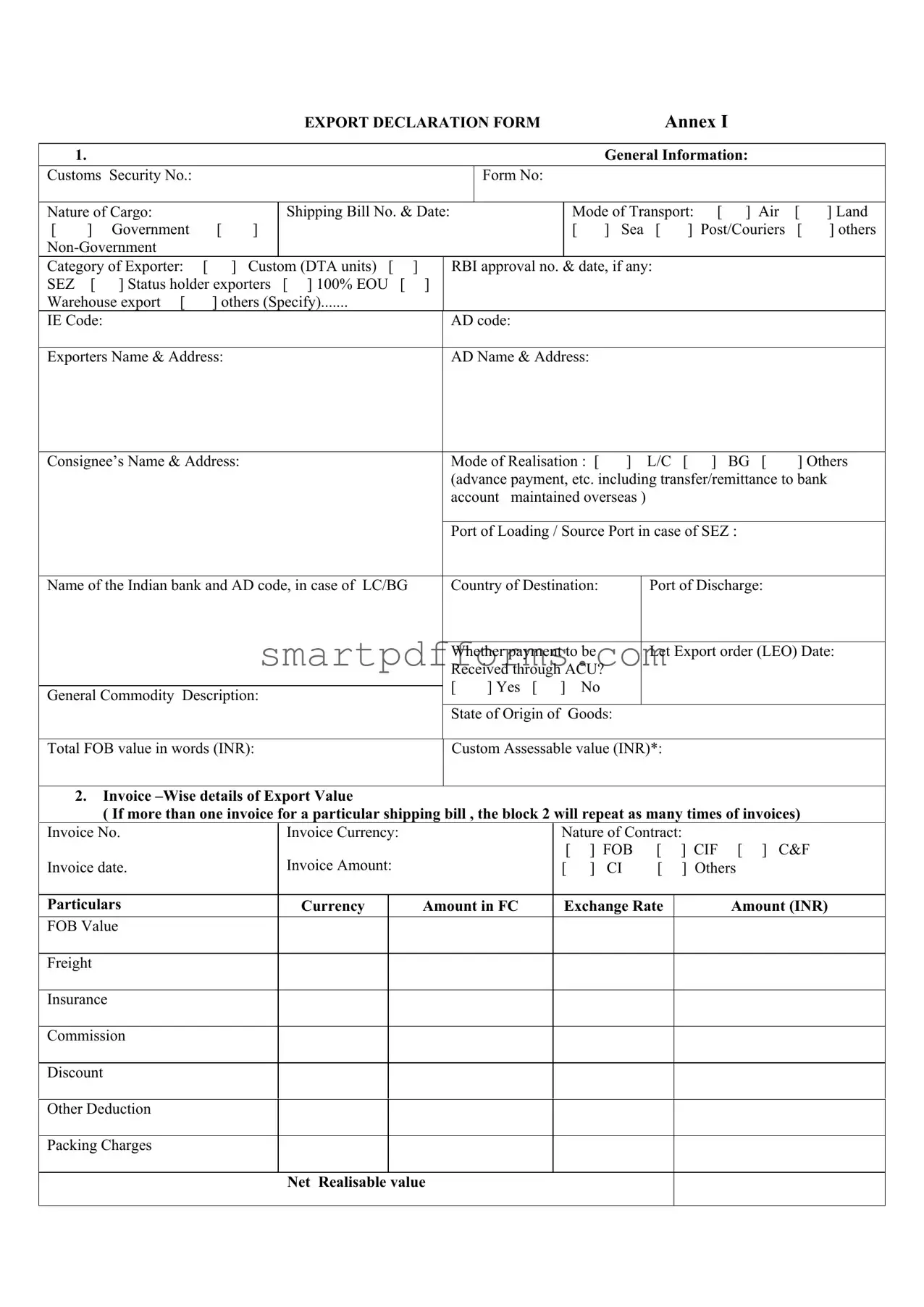The Export Declaration Form serves as a crucial document for businesses engaged in international trade, encapsulating a wide range of information essential for the export process. This comprehensive form covers general information such as the nature of cargo, shipping bill details, mode of transport, and exporter category, which are necessary for customs and regulatory purposes. It demands specifics, including customs security and form numbers, the mode of transport (air, land, sea, or others), and details about the exporter and consignee, including names, addresses, and relevant codes. Furthermore, it outlines the financial aspects related to the transaction, like the method of payment realization, total value in both foreign currency and INR, and the detailed breakdown of costs including freight, insurance, and discounts. The form also requires invoice-wise details of export value, ensuring accurate and detailed financial records are maintained for each shipment. Additionally, for exports under the Foreign Post Office or couriers, specific sections are to be filled, emphasizing the form’s versatility and comprehensive nature in accommodating various types of exports. Another significant aspect is the declaration by exporters, where they affirm the accuracy of the information provided and their commitment to repatriating the proceeds within the stipulated time frame, further reinforcing the form’s role in compliance and financial integrity. Custom authorities or Special Economic Zone (SEZ) units utilize the document to certify that the goods and declared values match the invoice details provided by the exporter, ensuring a level of scrutiny and verification in the export process. This declaration not only facilitates smooth customs clearance but also serves as a testament to the commitment of businesses to adhere to regulatory requirements and international trade norms.

